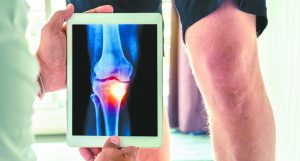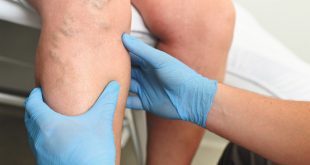By Dr. Nam Dinh, MD, FAAOS
 Arthritis is a common condition that affects millions of people worldwide, causing pain, stiffness, and inflammation in the joints. For those who enjoy an active lifestyle, arthritis can be particularly debilitating. However, it is possible to manage the condition and continue to live an active life. In this article, we will explore how having arthritis can affect an active lifestyle and what you can do about it.
Arthritis is a common condition that affects millions of people worldwide, causing pain, stiffness, and inflammation in the joints. For those who enjoy an active lifestyle, arthritis can be particularly debilitating. However, it is possible to manage the condition and continue to live an active life. In this article, we will explore how having arthritis can affect an active lifestyle and what you can do about it.
How Arthritis Affects an Active Lifestyle
Arthritis can impact the ability to participate in various activities, including sports, exercise, and outdoor pursuits. The most common types of arthritis are osteoarthritis and rheumatoid arthritis. Osteoarthritis is often associated with wear and tear on the joints, while rheumatoid arthritis is an autoimmune disorder that causes inflammation in the joints.
Regardless of the type of arthritis, the symptoms can make it difficult to maintain an active lifestyle. Joint pain, stiffness, and swelling can make it uncomfortable or painful to move, and activities that involve repetitive motions, such as running or cycling, can exacerbate symptoms.
Additionally, arthritis can lead to a loss of joint function over time, which can further limit the ability to engage in physical activity. For example, if arthritis affects the knees, it may be challenging to participate in activities that require jumping or running.
What You Can Do About It
If you have arthritis, there are several steps you can take to manage the condition and continue to lead an active lifestyle. Here are some strategies to consider:
Consult with a healthcare provider: If you suspect you have arthritis, it’s important to seek medical advice. A healthcare provider can help diagnose the condition and develop a treatment plan that may include medication, physical therapy, and lifestyle modifications.
Choose low-impact activities: Activities that put less strain on the joints can be beneficial for individuals with arthritis. Swimming, cycling, and yoga are all low-impact activities that can be effective in managing arthritis symptoms. Walking is also a great option, as it can be done at any time and doesn’t require any special equipment.
Incorporate strength training: Building muscle strength can help support the joints and reduce the risk of injury. However, it’s important to work with a physical therapist or personal trainer to develop a strength training program that is safe and effective for individuals with arthritis.
Practice good posture: Maintaining proper alignment can help reduce stress on the joints. When sitting, make sure to sit up straight and avoid slouching. When standing, distribute weight evenly on both feet and engage the core muscles.
Use supportive equipment: Depending on the type and location of the arthritis, using supportive equipment can help reduce pain and improve function. For example, if arthritis affects the knees, using a knee brace or sleeve can provide support and stability during physical activity.
Manage weight: Carrying excess weight can increase the load on the joints, exacerbating arthritis symptoms. Maintaining a healthy weight can help reduce stress on the joints and improve overall health.
Rest and recover: It’s important to listen to your body and take breaks when needed. If you experience pain or swelling, take a break from activity and rest the affected joint. Applying ice or heat and taking over-the-counter pain relievers can also help reduce inflammation and pain.
Arthritis can be a challenging condition to manage, but it doesn’t have to limit your ability to lead an active lifestyle. By working with a healthcare provider and incorporating strategies such as low-impact activities, strength training, and supportive equipment, it is possible to manage arthritis symptoms and continue to engage in physical activity. Remember to listen to your body, practice good posture, and take breaks when needed. With the right approach, individuals with arthritis can maintain an active, healthy lifestyle for years to come.
About Dr. Nam Dinh
Dr. Nam Dinh is a board-certified, fellowship trained orthopedic surgeon at Optimotion Orthopaedics with special training in minimally invasive LATERAL total knee replacement ANTERIOR hip replacement surgery. To learn more information about Dr. Dinh visit optimotion.com.
Optimotion Orthopeadics
(407) 355-3120
www.optimotion.com
 Central Florida Health and Wellness Magazine Health and Wellness Articles of the Villages
Central Florida Health and Wellness Magazine Health and Wellness Articles of the Villages



